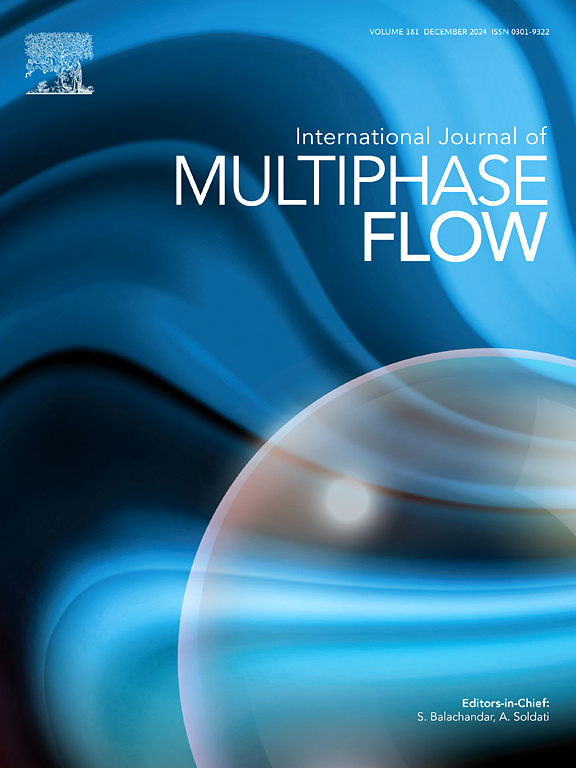Twin experiments for data assimilation of cavitating flow around a hydrofoil
IF 3.6
2区 工程技术
Q1 MECHANICS
International Journal of Multiphase Flow
Pub Date : 2025-03-08
DOI:10.1016/j.ijmultiphaseflow.2025.105201
引用次数: 0
Abstract
Twin experiments are conducted to clarify whether assimilation effects can be achieved by data assimilation (DA) with measurement data obtained by existing cavitation flow measurement techniques. The analysis object is the cavitation flow around a Clark-Y11.7% hydrofoil. The pseudo-measurement data are velocity fields from tomographic particle image velocimetry (TPIV) or two-dimensional PIV, both containing missing data in cavity, along with indirectly obtained cavity interface shapes. A large-eddy simulation is used for unsteady simulation of cavitating turbulent flow, and a local ensemble transform Kalman filter is used as the DA method. Visualized flow fields of the ensemble mean show that characteristic phenomena of the pseudo-measurement data are qualitatively reproduced. In addition, the time-series data at an observation point located at the position where the pseudo-measurement data exists converged following the pseudo-measurement data. The velocity inside the cavity, where no pseudo-measurement data exists, is also complemented by CFD that incorporates information from outside of the cavity. However, the complementation performance depends on the accuracy of the cavitation model. This DA program is applied to the real PIV data of single-phase flow and qualitatively reproduces the flow field. Furthermore, the observation noise is reduced and the data outside the measurement domain are complemented.

水翼周围空化流数据同化的孪生实验
通过双实验,阐明了对现有空化流测量技术获得的测量数据进行数据同化(data assimilation, DA)是否可以达到同化效果。分析对象为Clark-Y11.7%水翼的空化流。伪测量数据是来自层析粒子图像测速(TPIV)或二维PIV的速度场,两者都包含空腔中缺失的数据,以及间接获得的空腔界面形状。采用大涡模拟方法对空化湍流进行非定常模拟,采用局部系综变换卡尔曼滤波作为数据分析方法。集合平均流场的可视化表明,伪测量数据的特征现象得到了定性再现。此外,位于伪测量数据存在位置的观测点的时间序列数据向伪测量数据收敛。在没有伪测量数据存在的情况下,腔内的速度也由包含腔外信息的CFD补充。然而,互补性能取决于空化模型的准确性。将该数据分析程序应用于实际的单相流PIV数据,对流场进行了定性再现。进一步降低了观测噪声,补充了测量域外的数据。
本文章由计算机程序翻译,如有差异,请以英文原文为准。
求助全文
约1分钟内获得全文
求助全文
来源期刊
CiteScore
7.30
自引率
10.50%
发文量
244
审稿时长
4 months
期刊介绍:
The International Journal of Multiphase Flow publishes analytical, numerical and experimental articles of lasting interest. The scope of the journal includes all aspects of mass, momentum and energy exchange phenomena among different phases such as occur in disperse flows, gas–liquid and liquid–liquid flows, flows in porous media, boiling, granular flows and others.
The journal publishes full papers, brief communications and conference announcements.

 求助内容:
求助内容: 应助结果提醒方式:
应助结果提醒方式:


